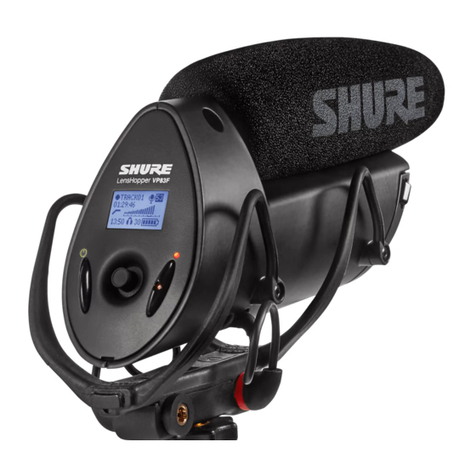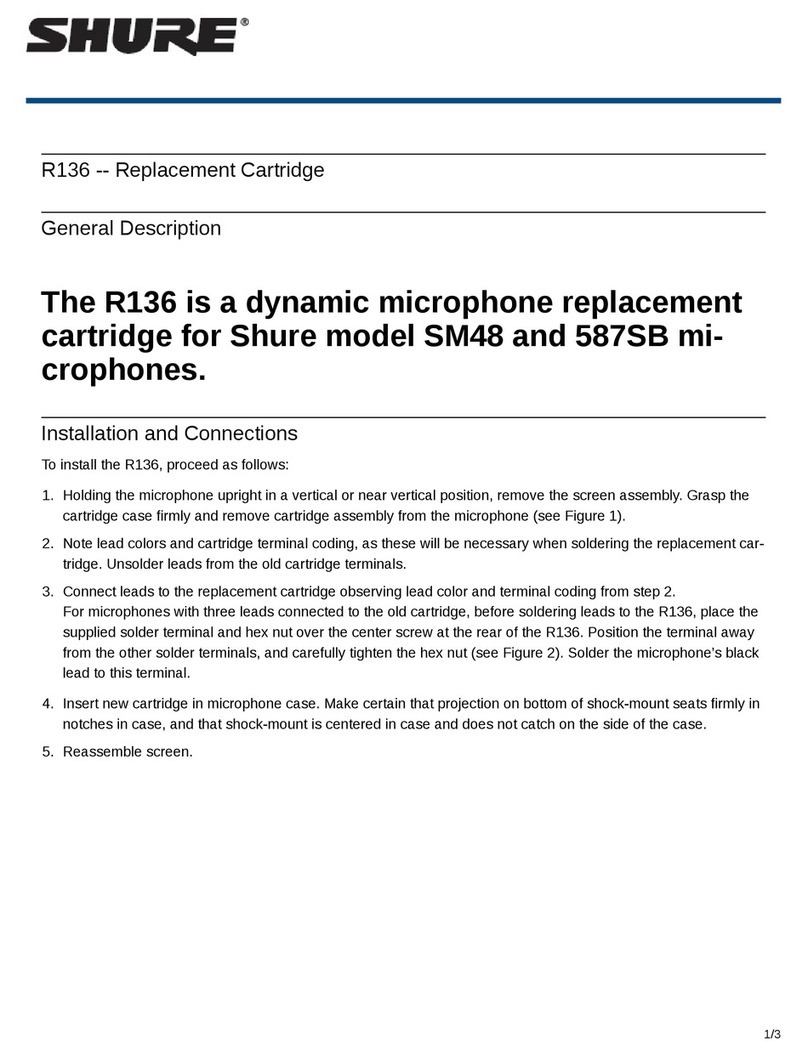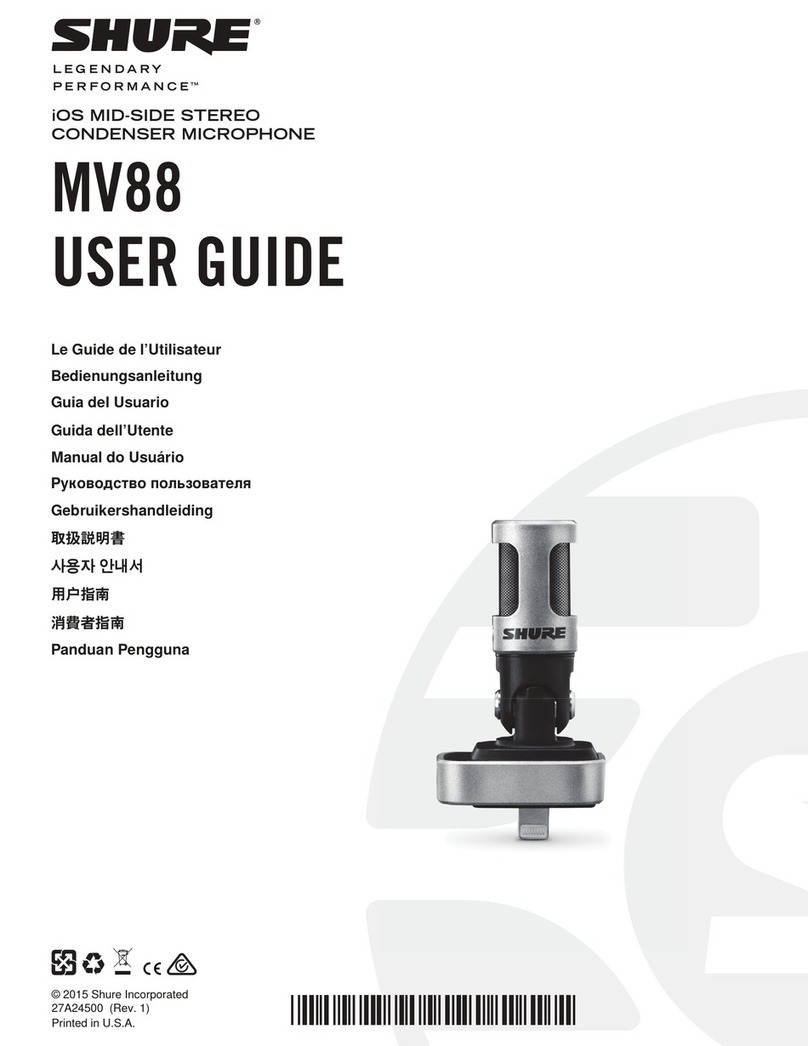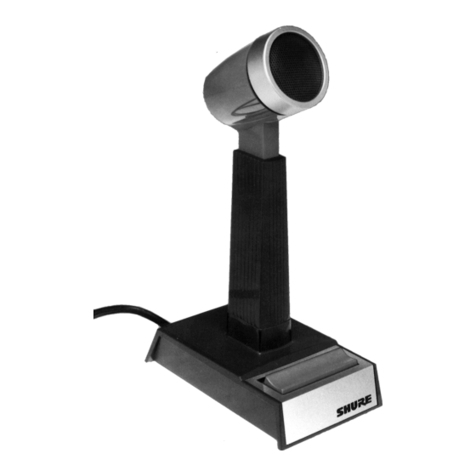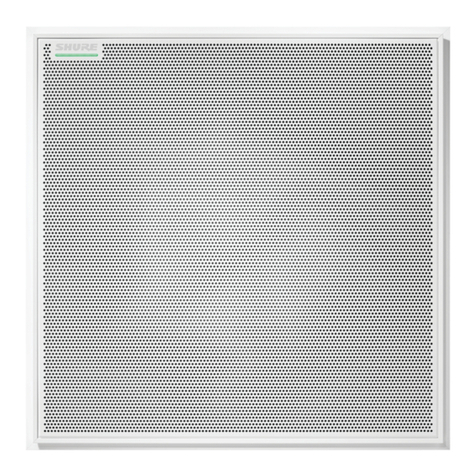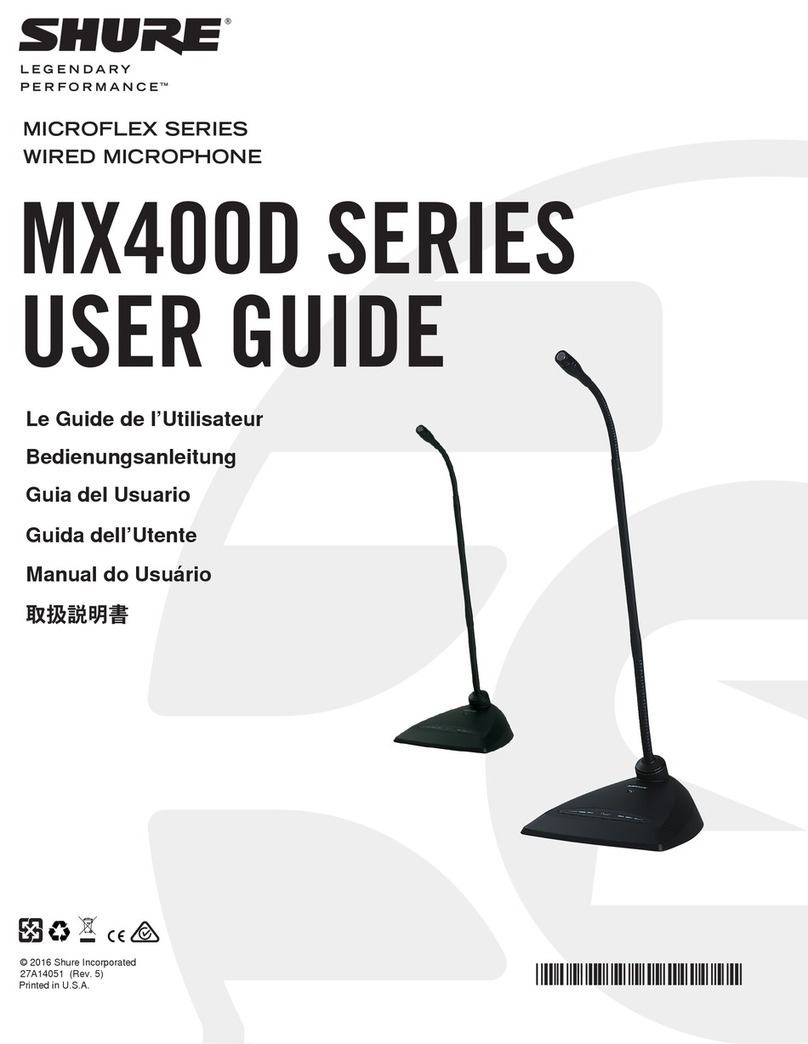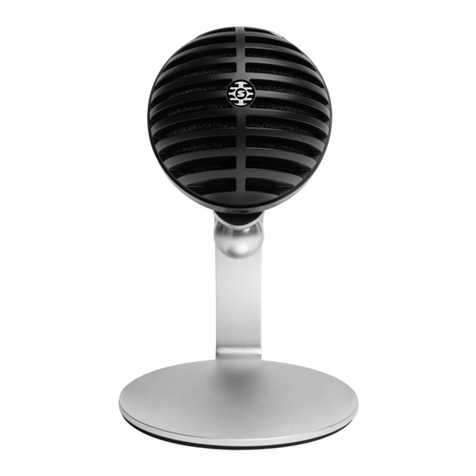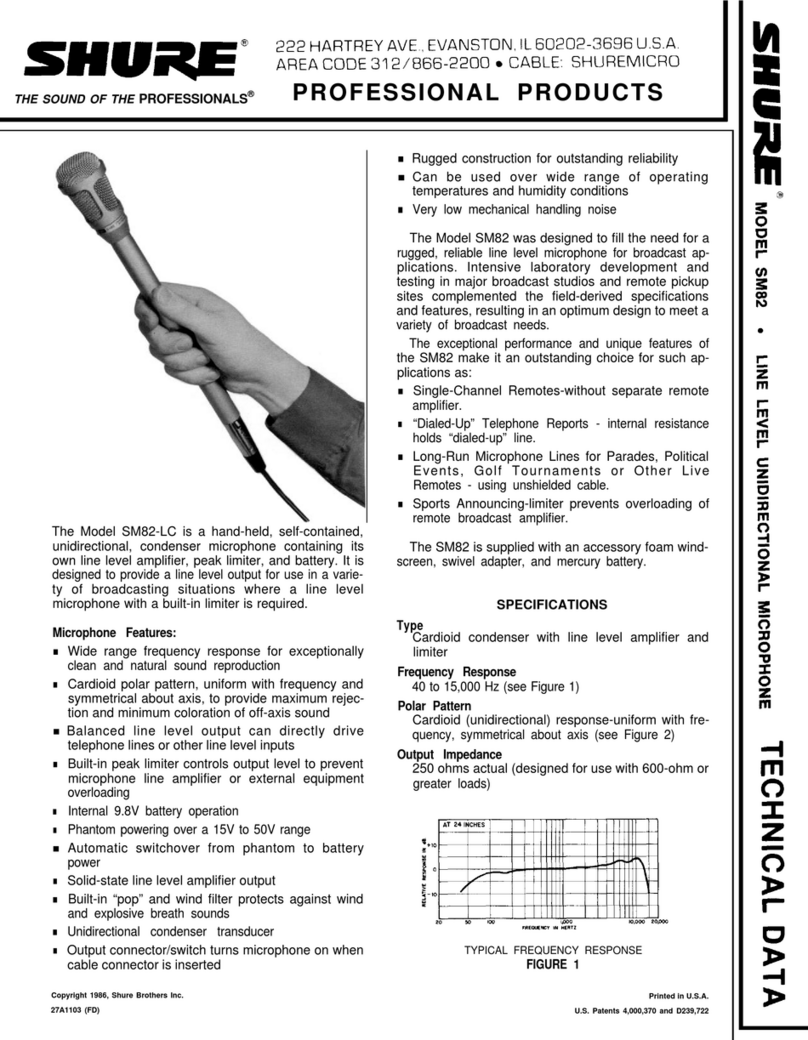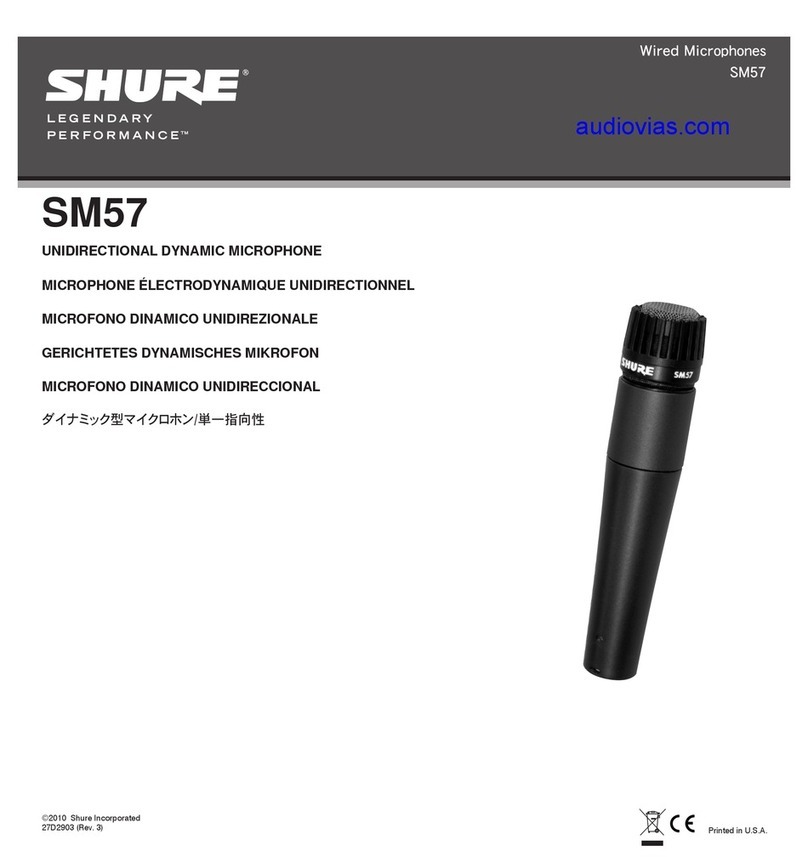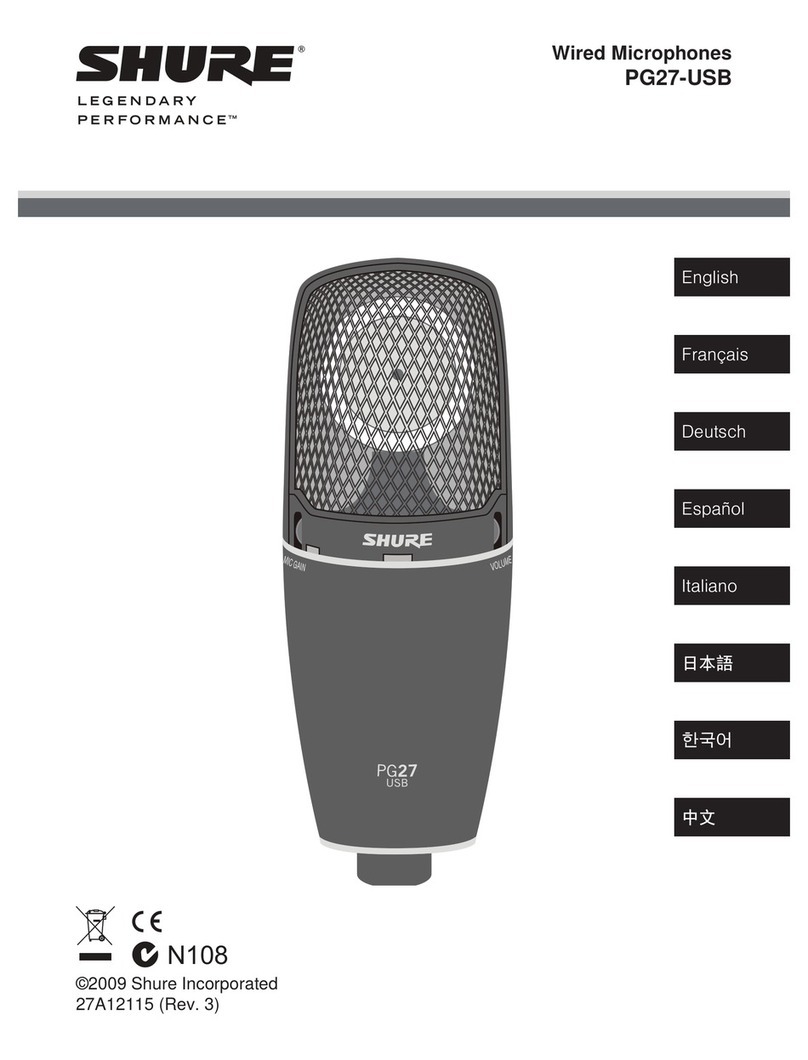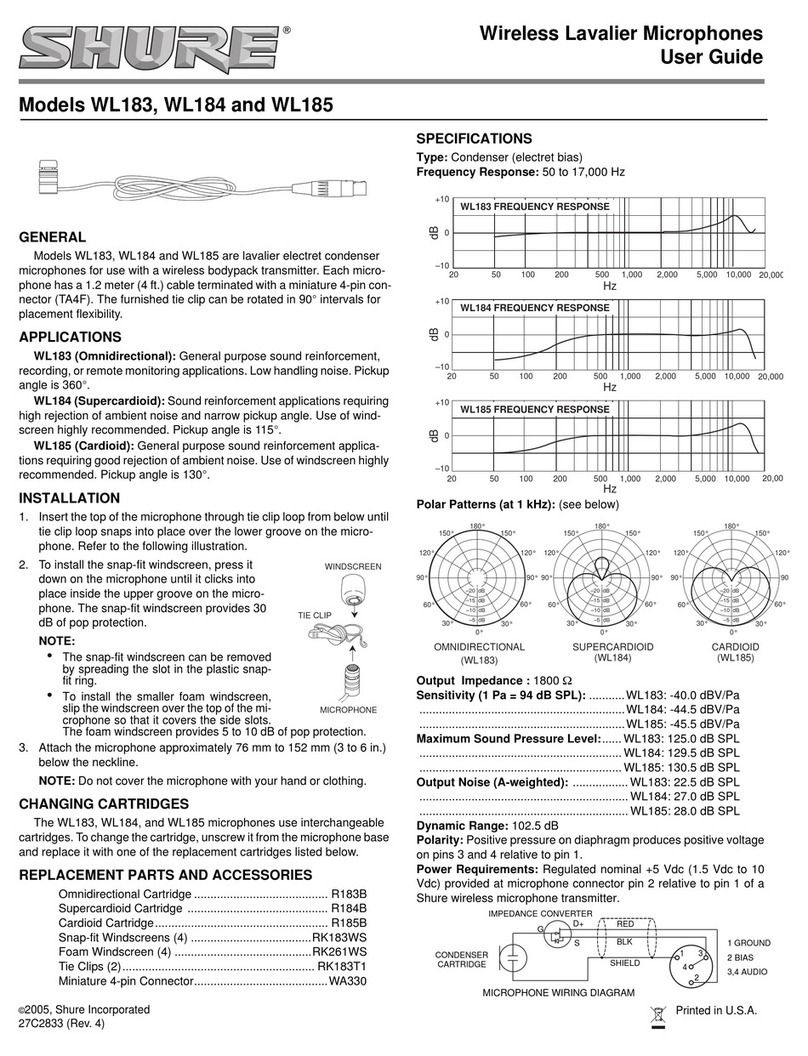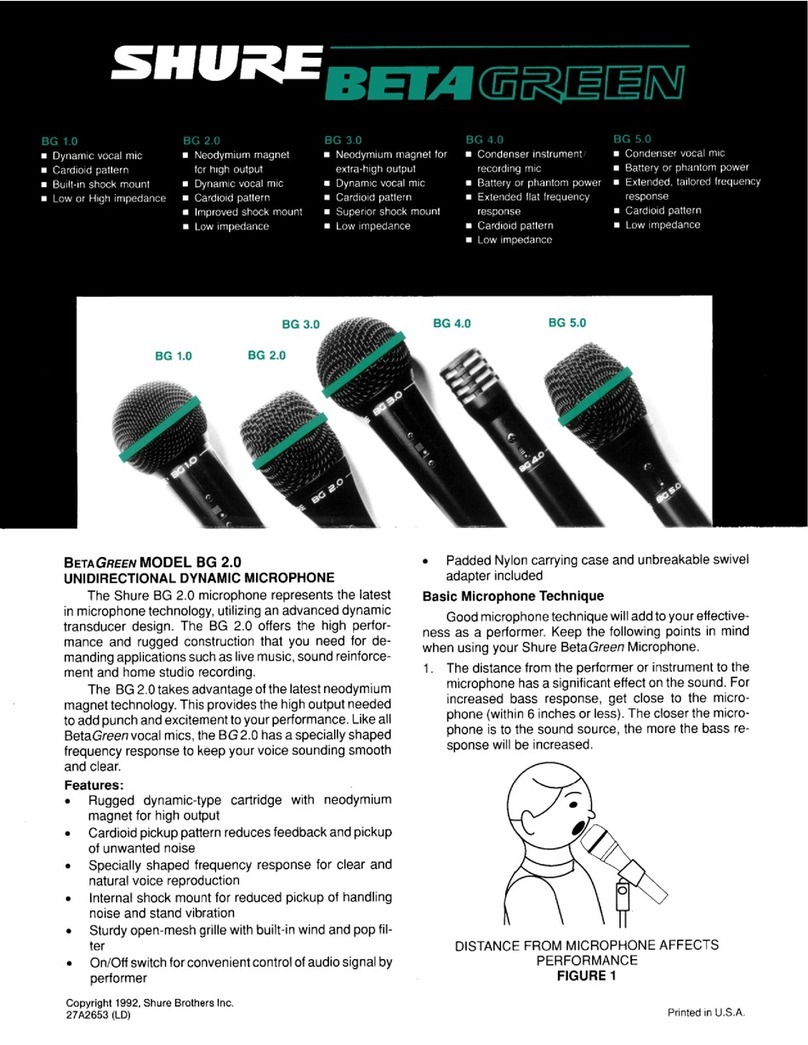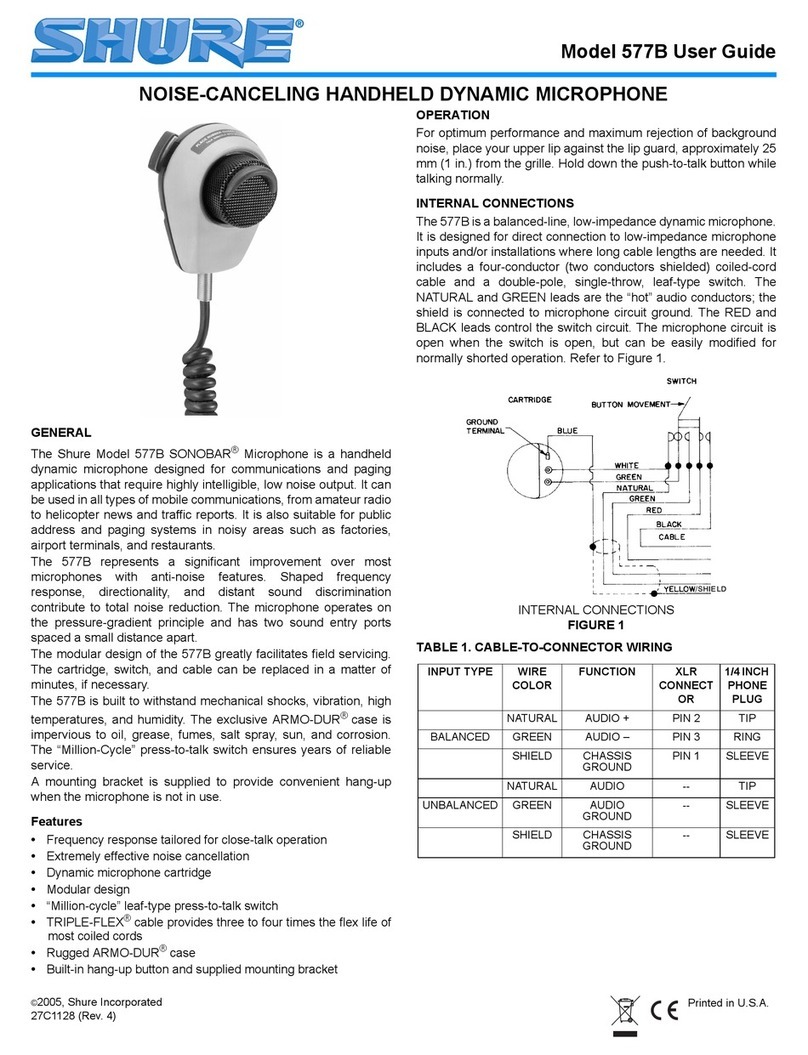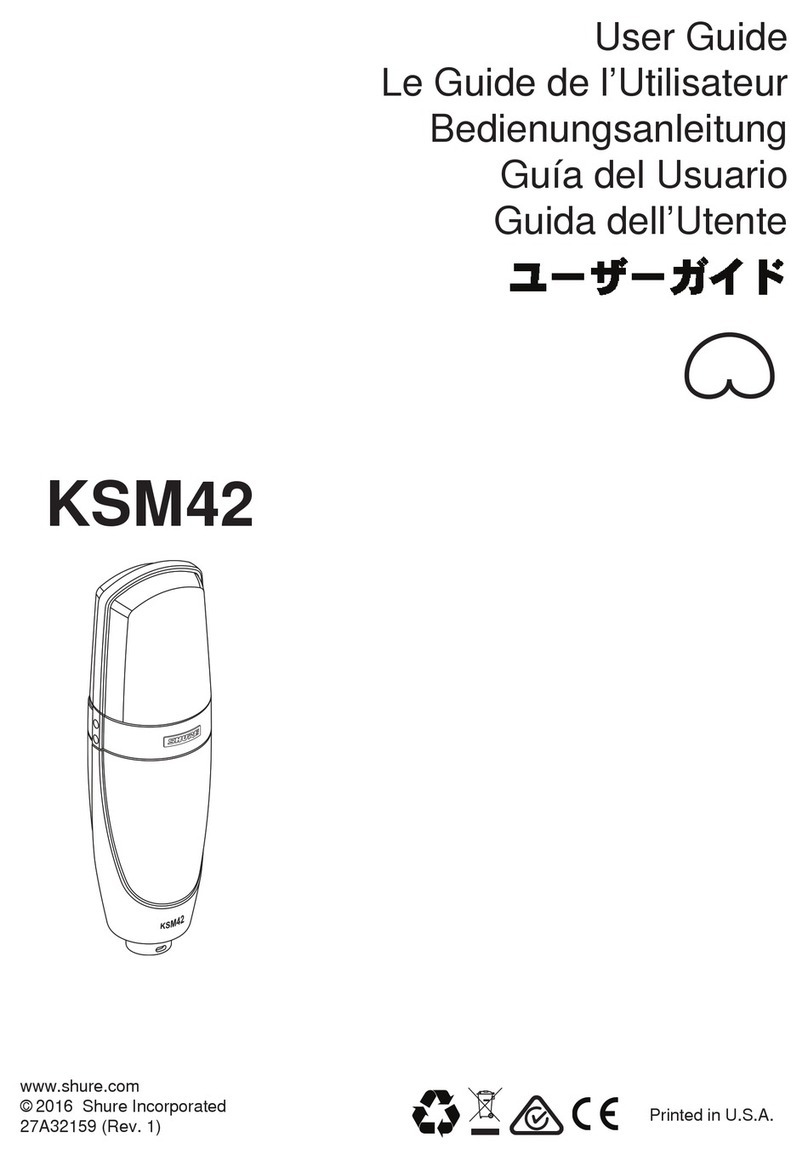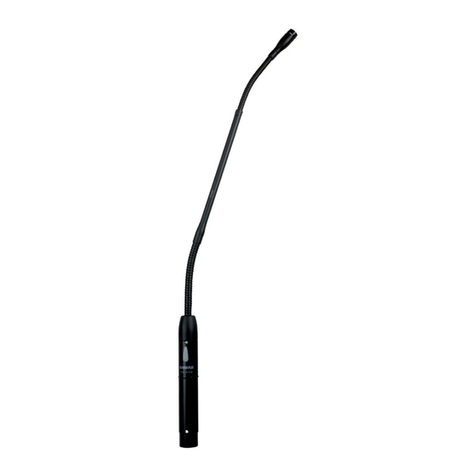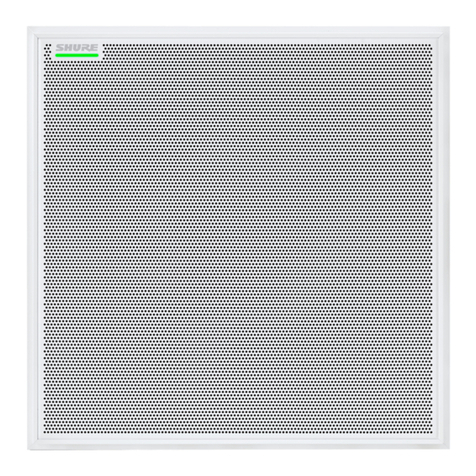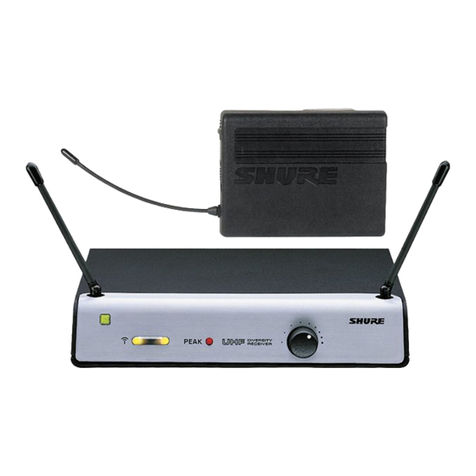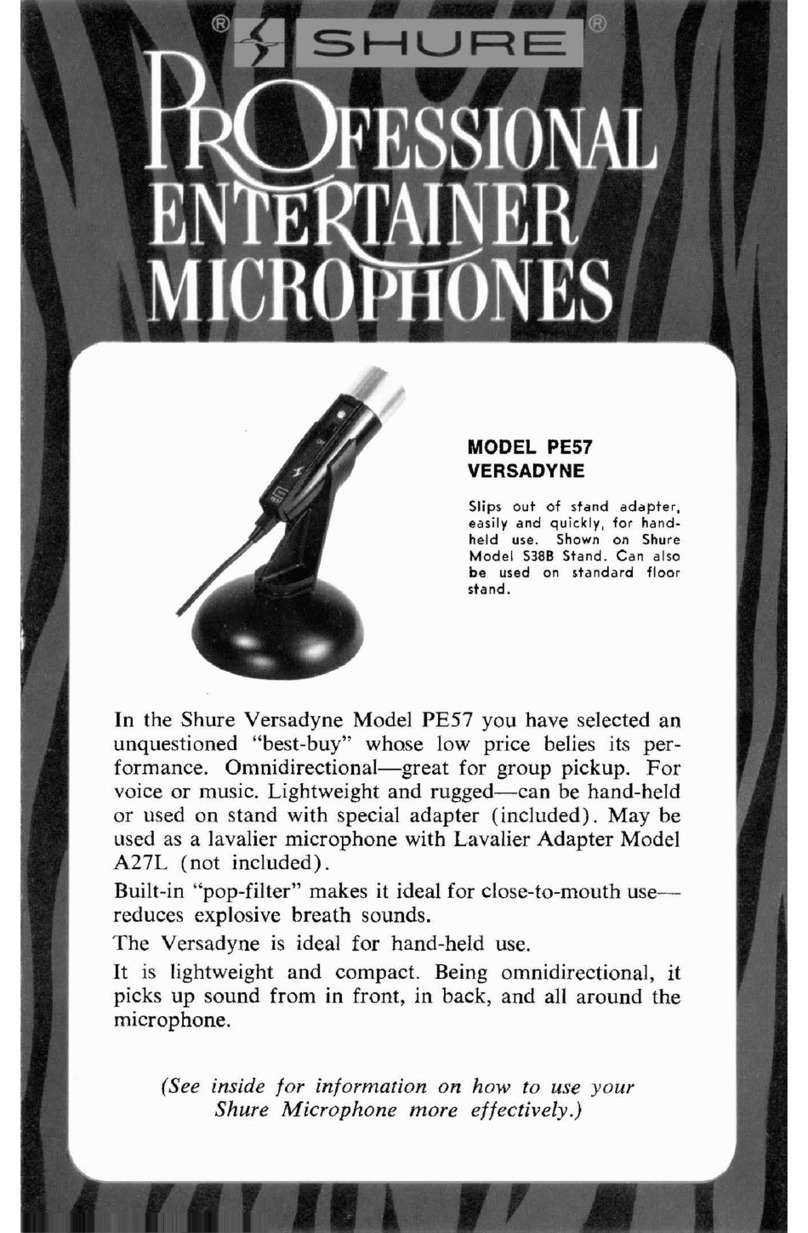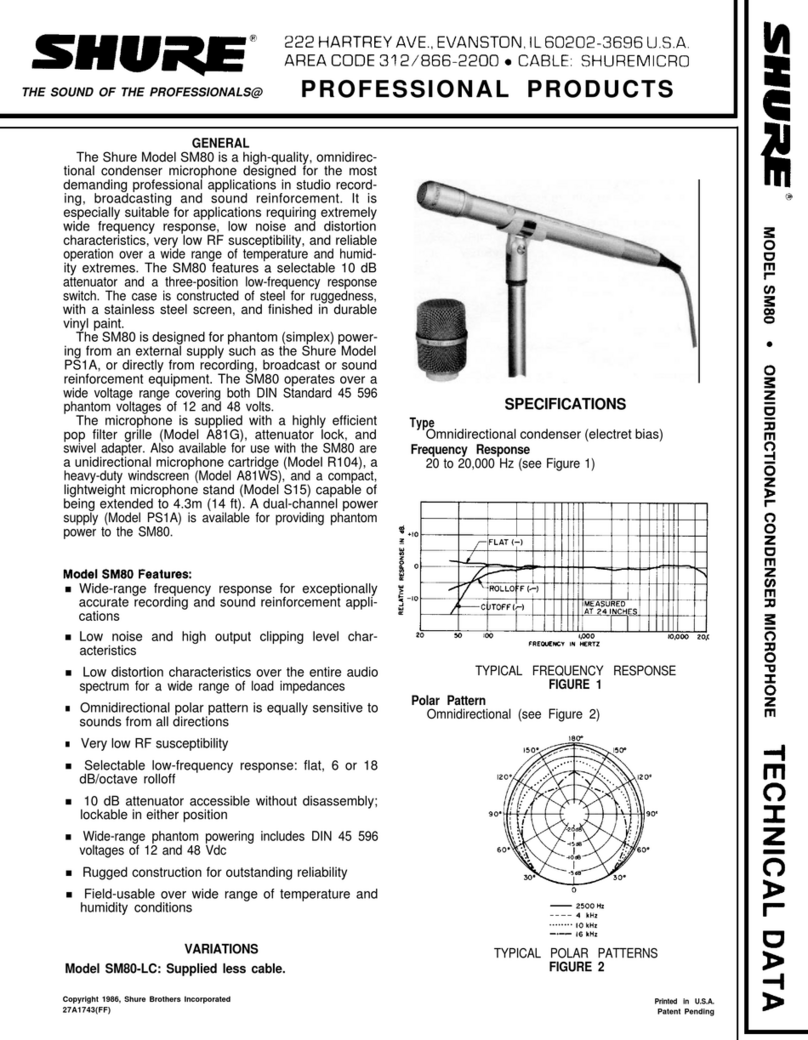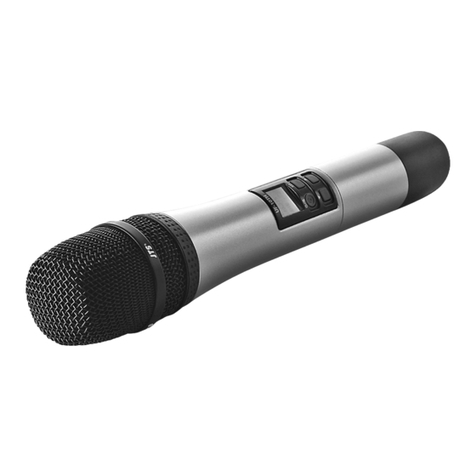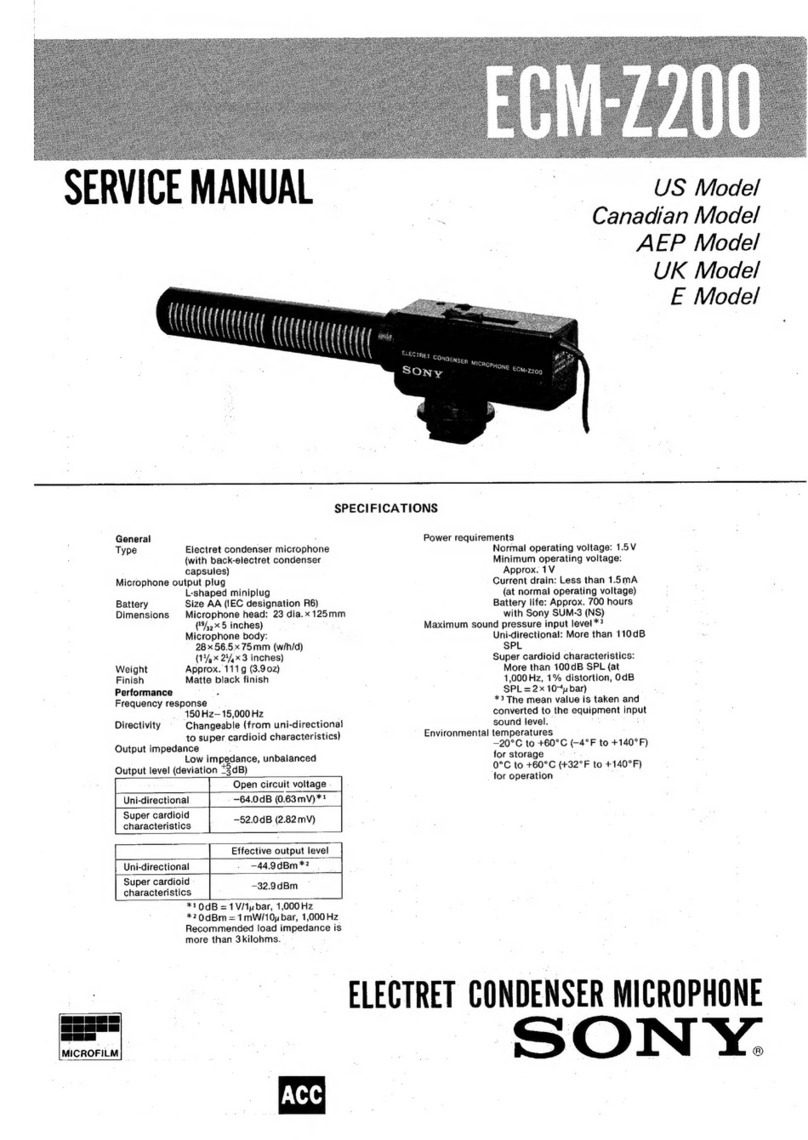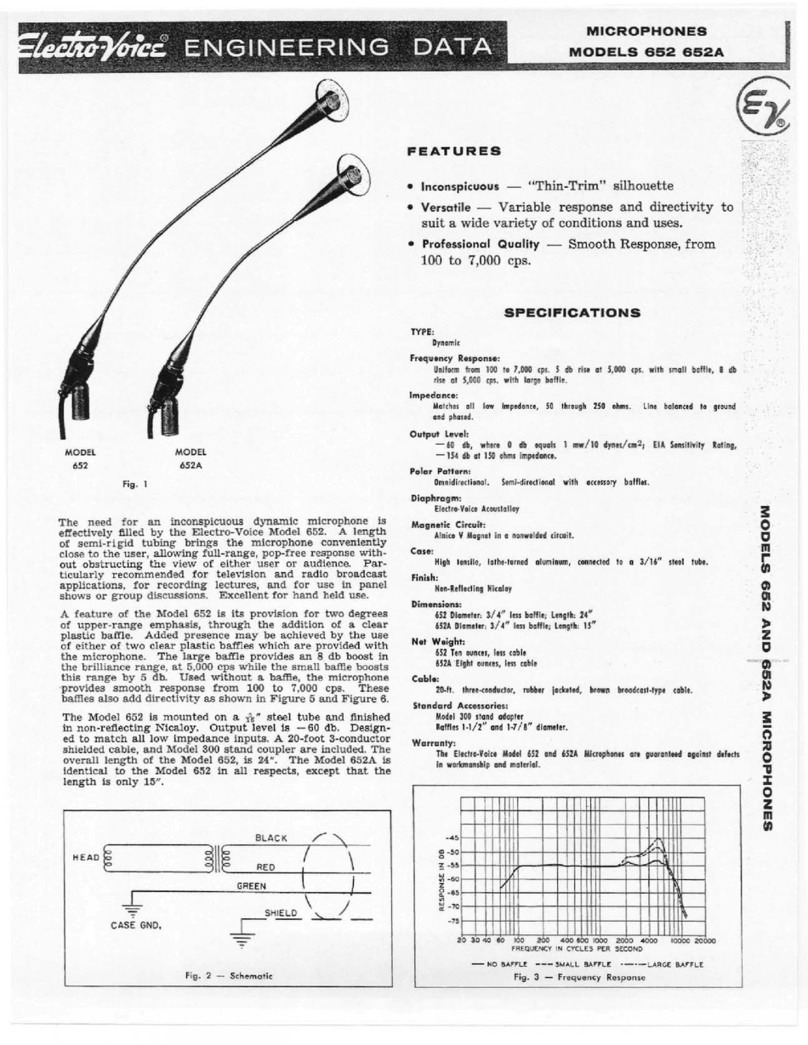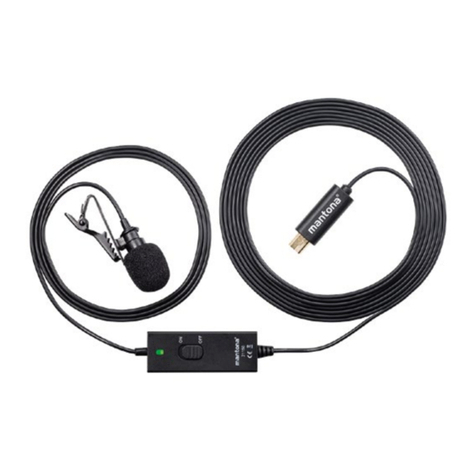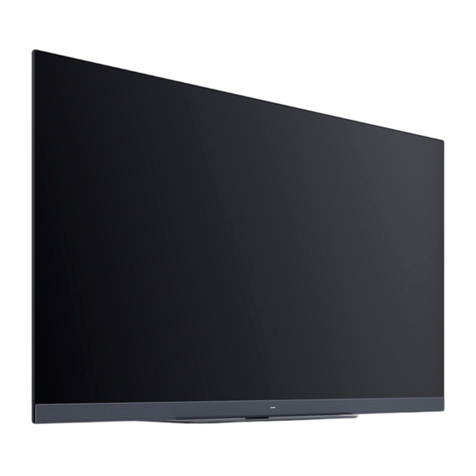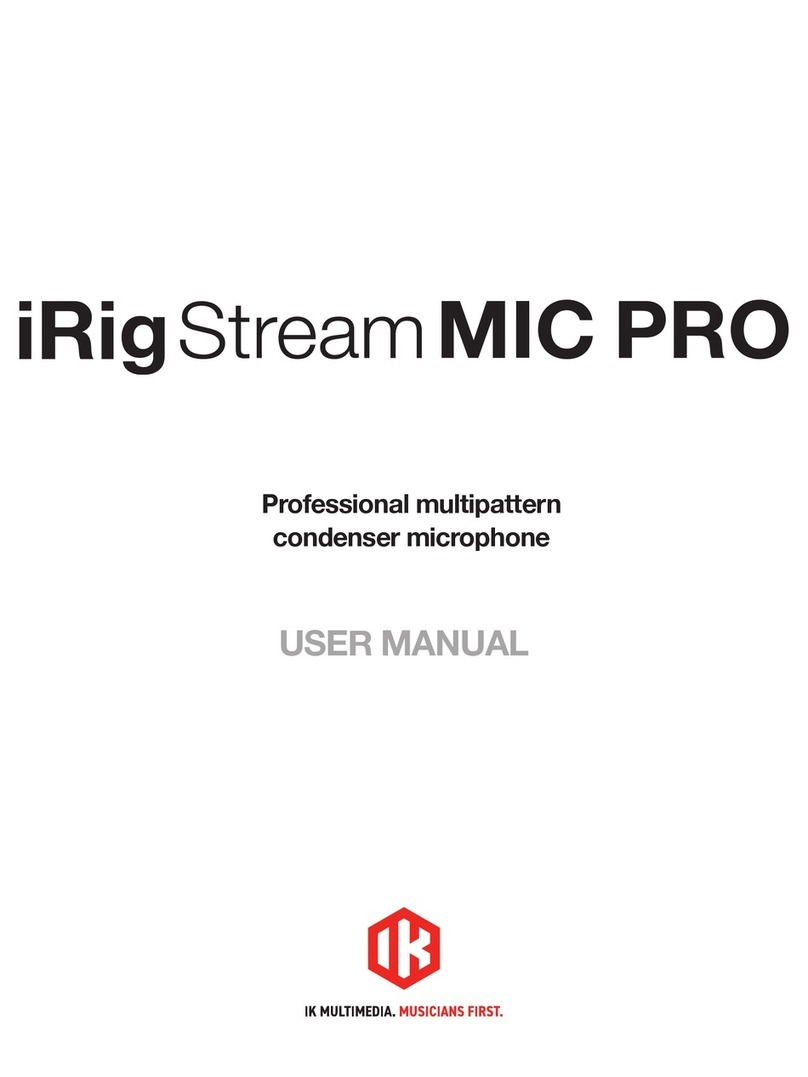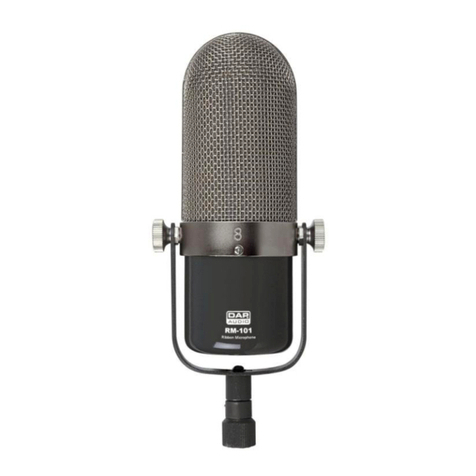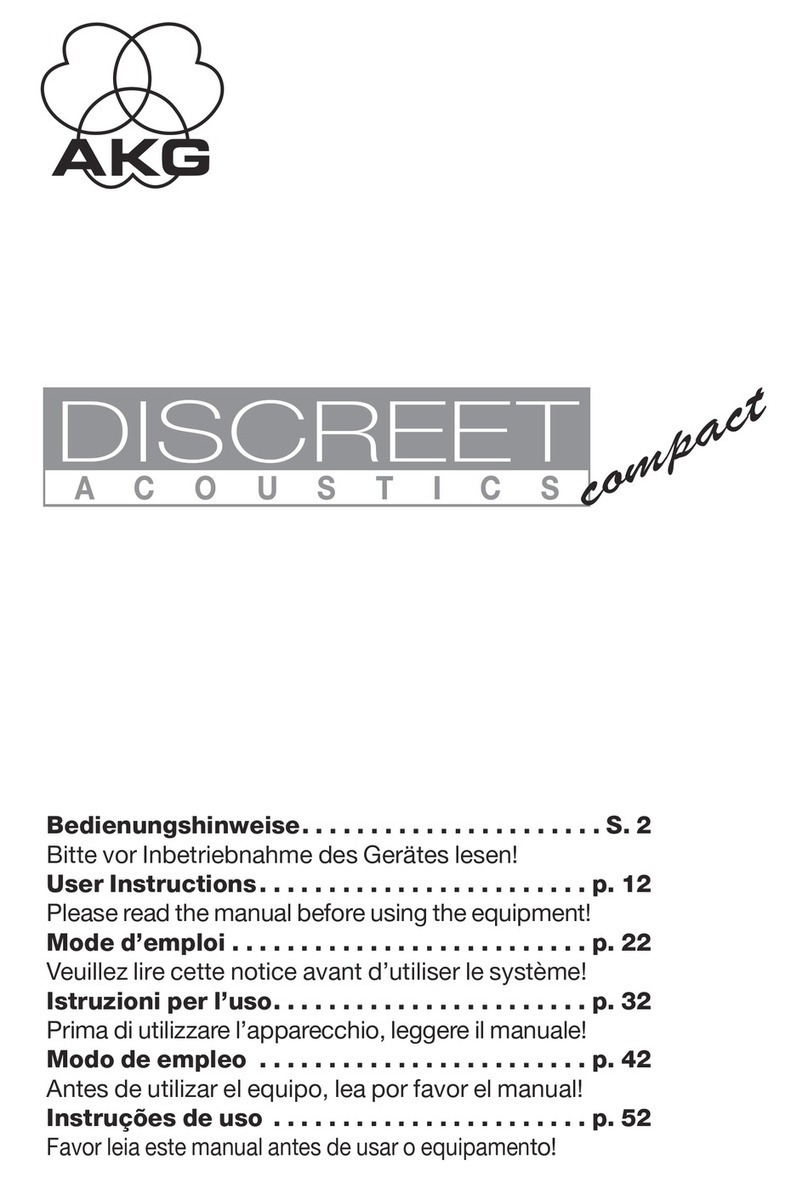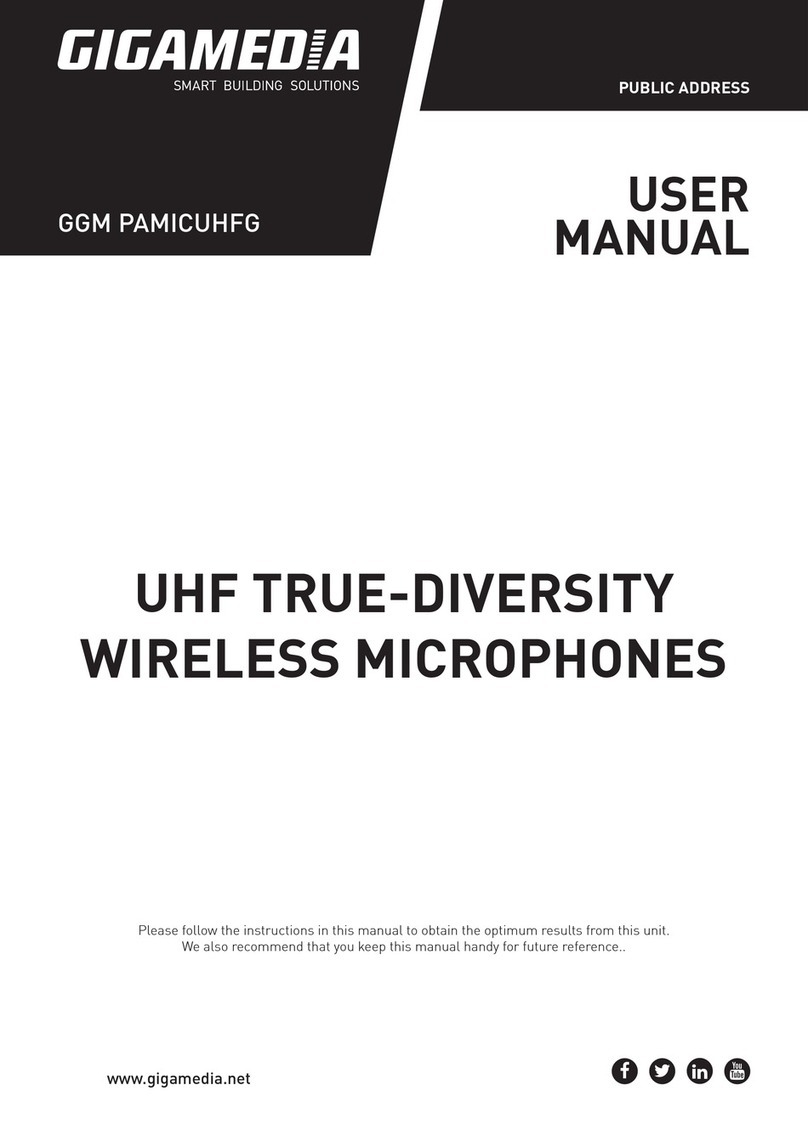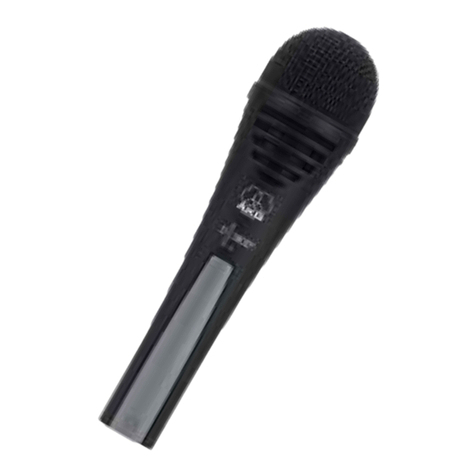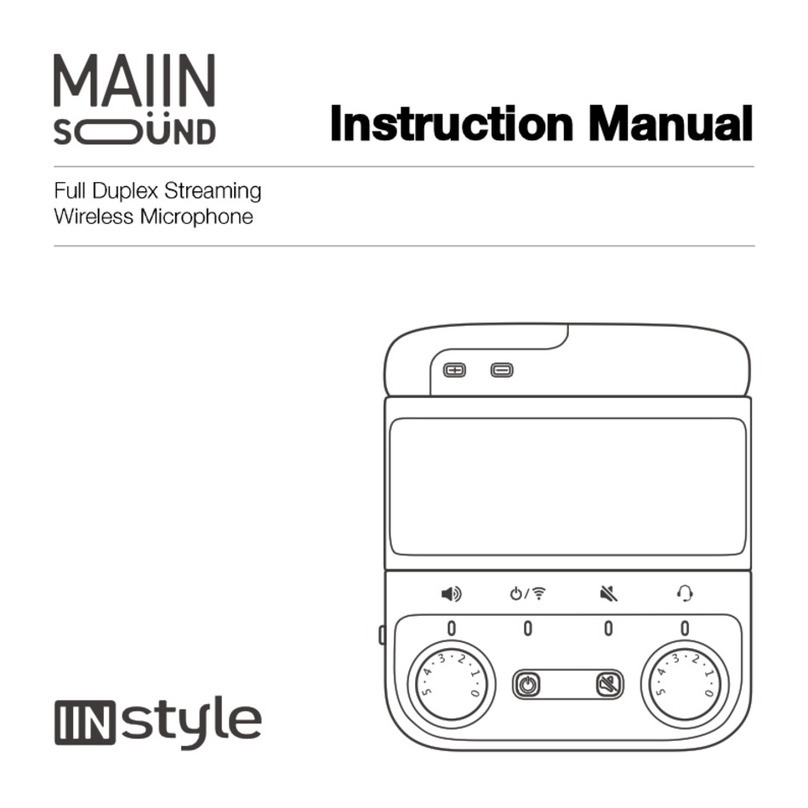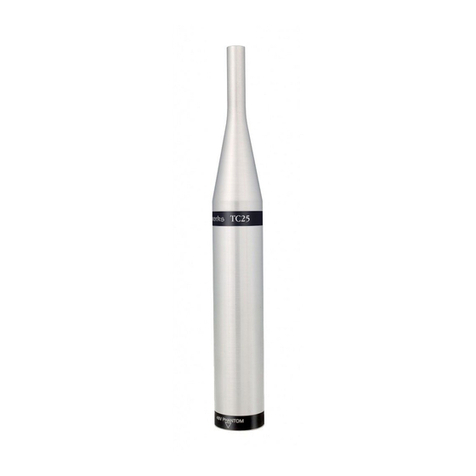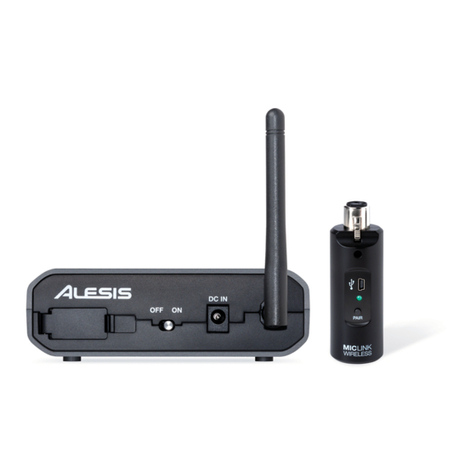
4
CARACTÉRISTIQUES DU PRÉAMPLIFICATEUR
Ces caractéristiques ne s'appliquent qu'au microphone MX391
lorsqu'il est utilisé avec le préamplificateur fourni. Toutes les mesures
ont été prises avec le microphone monté sur une surface en bois de
76,2 x 76,2 cm (30 x 30 po).
Courbe de réponse (Figure 5)
50 à 17 000 Hz
Impédance de sortie (1000 Hz)
180 Ωréelle (nominal, 150 Ω)
Sensibilité en circuit ouvert
Toutes les configurations -12 dB à 0 gain
*1 Pascal = 94 dB NPA
Pression acoustique maximum (1 kHz avec 1 % de distorsion
harmonique totale et charge de 1 kΩ)
Cardioïde : 118,8 dB
Supercardioïde : 117,5 dB
Omnidirectionnelle : 110,7 dB
+6 dB à 0 gain
Rapport signal/bruit (mesuré avec une pression acoustique
de 94 dB NPA)
Cardioïde : 71,4 dB
Supercardioïde : 72,7 dB
Omnidirectionnelle : 79,5 dB
Bruit de sortie équivalent (pondéré en A)
Cardioïde : 22,6 dB NPA
Supercardioïde : 21,3 dB NPA
Omnidirectionnelle : 14,5 dB NPA
Gamme dynamique vec charge de 1 kΩ
96,2 dB
100 dB à 0 gain
Rejet en mode commun
45 dB minimum, 10 Hz à 100 kHz
Niveau d'écrêtage de sortie du préamplificateur
-6 dBV (0,5 V)
-12 dB à 0 gain
Polarité
Une pression acoustique positive sur le diaphragme produit une tension
positive sur la broche 2 par rapport à la broche 3 du connecteur de sortie.
Alimentation
11 à 52 V c.c. duplex
Consommation de courant : 2,0 mA
Homologation
Autorisé à porter la marque CE. Conforme à la directive CEM eu-
ropéenne 89/336/CEE. Conforme aux critères applicables de test et de
performances de la norme européenne EN 55103 (1996) parties 1 et 2
pour les environnements résidentiels (E1) et d'industrie légère (E2).
ACCESSOIRES FOURNIS
Sac à glissière .................................................................... 95A2313
Préampli en ligne (MX391 et MX391W) ............................RK100PK
Clé hexagonale nº 4 (MX391 et MX391W) ........................... R185B
PIÈCES DE RECHANGE
Capsule omnidirectionnelle ................................................... R183B
Capsule supercardioïde ........................................................ R184B
Capsule cardioïde ................................................................. R185B
Préampli en ligne (noire) ...................................................RK100PK
Préampli en ligne (blanc) .............................................. RK100PKW
REMARQUE : Pour toute information technique par télécopie, composer
le 1-800-516-2525 et suivre les instructions de l'enregistrement. Pour
toute assistance technique supplémentaire, appeler Shure au (847) 600-
2000. En Europe, appeler le 49-7131-72140.
GEBRAUCHSANLEITUNG FÜR MICROFLEX
GRENZFLÄCHENMIKROFONE DER REIHE MX391
Shure Microflex®Mikrofone der Reihe MX391 sind kleine oberflächen-
montierte Elektretkondensatormikrofone, die zur Anbringung an Kon-
ferenztischen, Bühnenböden und Vortragspulten vorgesehen sind.
Durch ihre hohe Empfindlichkeit und den breiten Frequenzbereich
eignen sie sich besonders zur Aufnahme von Sprache und Gesang bei
der Tonverstärkung und bei Aufzeichnungsanwendungen.
MERKMALE
• Ebener Frequenzgang über den gesamten Stimmbereich für
unverfärbten Klang
• Austauschbare Nieren-, Supernieren- und Kugelkapseln, die
optimale Ausrüstung für jede Anwendung ermöglichen
• Glattes Flachformdesign für unauffälliges Erscheinungsbild
• Neuer HF-Filter
MODELLVARIANTEN
An den MX391 und MX391W (weiß) -Modellen ist ein 4 Meter langes
Kabel angebracht, das mit einem 4-pin miniatur steckverbindung ab-
geschlossen ist; sie verfügen außerdem über einen separaten Vorver-
stärker. Auf Wunsch kann der 4-pin miniatur steckverbindung entfernt
und das Mikrofonkabel direkt an den Schraubklemmen am Vorver-
stärker angeschlossen werden. Für dieses Anschlußverfahren wird
eine Gummizugentlastung mitgeliefert.
Microflex®-Grenzflächenmikrofone werden mit einer der folgenden
drei austauschbaren Kapseln geliefert. Die Modellnummer (an der Un-
terseite des Mikrofonsockels) gibt an, um welche Ausführung es sich
bei dem Mikrofon handelt.
Der Reihe MX391/C. Nierenrichtcharakteristik für allgemeine Tonver-
stärkungsanwendungen. Ansprechwinkel (-3 dB) = 130°.
Der Reihe MX391/S. Supernierenrichtcharakteristik für Tonver-
stärkungsanwendungen, die eine engere oder weiter entfernte Ab-
deckung erfordern. Ansprechwinkel (-3 dB) = 115°.
Der Reihe MX391/O. Kugelrichtcharakteristik für Aufzeichnungs- oder
Fernüberwachungsanwendungen. Ansprechwinkel = 360°.
DAUERHAFTE ANBRINGUNG
1. Den Grill vom Mikrofonsockel abnehmen, indem die Schraube an
der Oberseite des Grills gelöst wird, (Abbildung 1).
ACHTUNG: Nicht versuchen, das Kabel von der Mikro-
fonschnittstelle abzunehmen.
2. Das Kabel durch die Austrittsöffnung an der Unterseite verlegen
und straffziehen:
3. Mit der mitgelieferten Schablone (Abbildung 3) Schraubenbohrun-
gen und eine Austrittsöffnung an der Unterseite in die Befesti-
gungsfläche bohren.
4. Den 4-Pin-Ministecker und das Kabel durch das Loch im Tisch
führen.
5. Den Grill wieder anbringen und die Schraube durch den Metallgrill
und in die Mikrofonschnittstelle einschrauben und festziehen.
Type de cartouche Réf. 1 kHz, 1 V par Pascal *
Cardioïde -29,6 dB (33,5 mV)
Supercardioïde -28,3 dB (38,5 mV)
Omnidirectionnelle -21,5 dB (81,4 mV)
